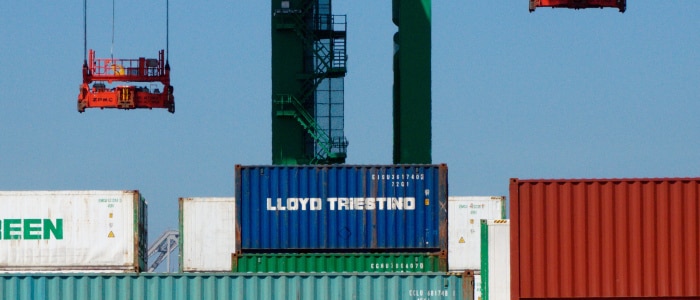Published
The World Economy – Running on One or Two Engines?
By: Fredrik Erixon
Subjects: WTO and Globalisation

The image of the world economy in the past years has been one of a slowing tanker, running only on one engine. The developing part of the world, or what in today’s language is called the fast risers, has been holding up the world economy while the traditional centres of economic output has been fighting noxious crises.
Europe has been suffering from a deep recession and has gone through an existential crisis hanging like a dark cloud over the euro currency union. The United States has been weighed down far longer than many people expected by the financial crash in 2008 – helped, of course, by recurring political gridlock in the U.S. Congress. And Japan entered this new decade with the same economic malaise as in the past decades: low growth, high public debt, and general deflation.
Is it now time to change this image from a one-engine to a two-engine tanker?
Let us start with the good news. The Eurozone is not going to crash. While the recovery is patchy – and, like all recoveries, offers mixed and conflicting signals – economic growth is moving up from the negative territory of the past years. The U.S. economy is growing at a far healthier level today than a year ago, let alone two years ago. And Japan has finally started to register economic growth and inflation. While all three economies are facing several downside risks, the consensus forecast is that they are moving in the right direction.
The less good news is that the recovery in the “old economies” is still too slow to cover the slack from the growth slowdown in the “new economies”.
First, despite the ascending recovery in the no one should expect growth levels in “old economies” to rise above historic trends. European economies will be weighed down by the necessity to cut excessive deficits and debts – while the disposition for growth-inducing economic reforms is not exactly an inspiration to the world. The U.S. economy will no doubt be chilled by Fed tapering. And the Japanese government has yet to deliver on the third arrow of the new growth program. While fiscal and monetary expansion, the first two arrows, can be done by the stroke of a pen – the last arrow, structural economic reforms, require political leadership that yet has to reveal itself.
Second, emerging economies have no doubt entered a period of structural slowdown. Now that the super commodity cycle has petered out, economic growth in Brazil and Russia has tanked. Russia grew by 1.5 percent last year – and Brazil has just cut its growth forecast for 2014 below 2 percent. So all those people that still believe in the BRIC phantasy – that growth in these economies had been disconnected from the liquid Western markets – need at least to take the B and R out of the acronym.
India and China are racing ahead, still at a fast pace, but their economies are slowing down. India’s intrusive but inept government, still far too imbued with the “license Raj”, undermines the country’s discounted hope for a “demographic dividend”. India, says economist Gurcharan Das, “only grows at night”, when bureaucrats are asleep. The cause celebre of global trade policy, India’s growing protectionism is nothing but corrosive for its ambition to spur economic growth on the back of trade and external demand.
China still records growth at elevated levels, but has entered a structural slowdown intimately linked to its increasingly exhausted model for economic growth. While a key source of global growth for the past ten years, its growth expectations for the next ten years are less promising. Much will depend on its capacity to effect a quick transition from an investment-led growth model to a new one based on rising domestic consumption and economic reforms. With growth at 7.5-plus percent in 2014 – significantly below the growth levels experienced a few years ago – China remains the envy of the world. But it cannot alone keep up global growth.
The structural slow down in emerging economies is, however, not reversing the long-term trend of the world economy. It is inexorably moving towards the East. Last year, for the first time ever, emerging markets produced more than half of goods and services in the world. Annual growth around eight percent in China now equals economic growth of four percent in the United States. Compare that to 1980 when China needed to grow by ten percent annually to expand output with as much as a growth of one percent in the U.S. Today, China adds an entire Greek economy to global Gross Domestic Product – every nine week.
A study by McKinsey Global Institute that geographically positioned the world’s economic centre of gravitation showed that it will have moved to the region of Novosibirsk in 2025. In 1950, that position was close to Iceland, safely tucked in between Europe and the United States. And the world economy especially moves away from Europe. The International Monetary Fund (IMF) expects that of all global growth between 2012 and 2017, the European Union will only account for 5.7 percent. Ten years ago, the equivalent figure was in excess of 20 percent. The European continent may not be permanently demoted to low economic expectations, but absent a new wave of structural economic reforms raising potential growth, Europe will have a hard time making its way in global economic policy.
So the world economy tanker, then, will soon run on two engines – both the mature economies and the rising economies. That is the good news. The bad news is that neither engine will be strong enough for the tanker to regain the pre-crisis speed.
This piece was published as an exclusive comment in People’s Daily, China.